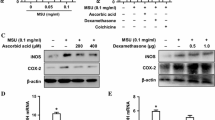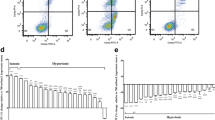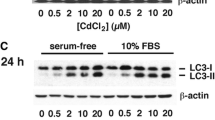Abstract
Catecholamines regulate a variety of cellular functions in the mammalian kidney. The present study was aimed to investigate the differential sensitivity of Madin-Darby Kidney Cells (MDCK cells) to epinephrine in a dose-dependent manner. The loss of adhesion and altered cell shape were observed in MDCK cells. The presence of apoptosis and necrosis were studied by the fluorescence microscope and Confocal Laser Scanning Microscope (CLSM). Scanning Electron Microscope (SEM) analysis showed several surface microvilli, and cells were rounded having ruffled and crenated surface. Agarose gel electrophoresis study showed the presence of smearing, which further confirms the occurrence of necrosis. The fluorescence staining study showed the increased reactive oxygen species (ROS) level. Up-regulation of p53, bax, and caspase 3 mRNA expressions was evidenced by quantitative PCR (qPCR). Caspase 3 activity was also increased in epinephrine treated cells. Our experimental results do not imply that the epinephrine should not be used in the clinical treatments. However, our results add a research note of caution on the possible cytotoxic effect of maximal doses of epinephrine over a prolonged time.











Similar content being viewed by others
References
Osswald H, Grevin J. Effects of adrenergic activators and inhibitors on kidney function. In: Born GVR, Farah A, Herlcen H, Welch AD (ed) Springer-Verlag, Berlin, 1980;243–288.
Insel PA, Snavely MD. Catecholamines and the kidney: receptors and renal function. Annu Rev Physiol 1981;43:625–636.
Endori H, Imai M. Introduction to new approaches in renal pharmacology. In: Hagihara Y, Ebashi J. (ed) Cardio-renal and Cell Pharmacology, Oxford, 1982;297–293.
Gaush CR, Ward WL, Smith TF. Characterization of an established line of canine kidney cells (MDCK). Proc Soc Exp Biol Med 1996;122:931–935.
McRobcrts JA, Taub M, Saier MH. The Madin Darby canine kidney (MDCK) cell line. In: Sato G, Alan R. (ed) Functionally Differentiated Cell Lines, New York, 1981;117–139.
Herzlinger DA, Easton TG, Ojakian GK. The MDCK cell line expresses a cell surface antigen of the kidney distal tubule. J Cell Biol 1982;93:269–277.
Rindler MJ, Chuman LM, Shaffer L, Saier MH Jr. Retention of differentiated properties in an established dog kidney epithelial cell line (MDCK). J Cell Biol 1979;81:635–648.
Valentich JD. Morphological similarities between the dog kidney cell line MDCK and the mammalian cortical collecting duct. Ann N Y Acad Sci 1981;372:384–405.
Berecek KH, Brody MJ. Evidence for a neurotransmitter role for epinephrine derived from the adrenal medulla. Am J Physiol 1982;242: H593–H601
Outshoorn AS. The hormones of the adrenal medulla and their release. Br J Pharmacol Chemotherap 1952;7: 605–615.
Raymondos K, Panning B, Leuwer M, Brechelt G, Korte T, Niehaus M, Tebbenjohanns J, Piepenbrock S. Absorption and hemodynamic effects of airway administration of adrenaline in patients with severe cardiac disease. Ann Intern Med 2000;132:800–803
Vichai V, Kirtikara K. Sulforhodamine B colorimetric assay for cytotoxicity screening. Nature Protocs 2006;1:1112–1116
Xiao JX, Huang GQ, Zhu CP, Ren DD, Zhang SH. Morphological study on apoptosis Hela cells induced by soyasaponins. Toxicol In Vitro 2007;21:820–826.
Heckman C, Kanagasundaram S, Cayer M, Paige J. Preparation of cultured cells for scanning electron microscope. Protocol Exchange 2007;doi: 10.1038/nprot.2007.504.
Merante F, Raha S, Ling M. Isolation of Total Cellular DNA from Tissues and Cultured Cells. Molecular Biomethods Handbook. pp 9–16, 1998.
Kirkland RA, Windelborn JA, Kasprzak JM, Franklin JL. A Bax-induced pro-oxidant state is critical for cytochrome release during programmed neuronal death. J Neurosci 2002;22: 6480–90.
Muthuraman P, Muthuviveganandavel V, Kim DH. Cytotoxicity of zinc oxide nanoparticles on antioxidant enzyme activities and mRNA expression in the cocultured C2C12 and 3T3-L1 cells. Appl Biochem Biotechnol 2015;175: 1270–1280.
Pfaffl MW. A new mathematical model for relative quantification in real-time RT-PCR. Nucleic Acids Res 29: e45
Yeh CC, Kuo HM, Li TM, Lin JP, Yu FS, Lu HF, Chung JG, Yang JS. Shikonininduced apoptosis involves caspase-3 activity in a human bladder cancer cell line (T24). In Vivo 2007;21:1011–1019.
Potter DE, Rowland JM. Adrenergic drugs and intraocular pressure. GenPharmcol 1981;12: l–13
Rodger IW, Bowman WC. Adrenoceptors in skeletal muscle. Tunas G (ed) In Adrenoceptors and Catecholamine Action, John Wiley. New York. 1983;pp123–55.
Tattona NA, Rideout HJ. Confocal microscopy as a tool to examine DNA fragmentation, chromatin condensation and other apoptotic changes in Parkinson’s disease. Parkinsonism and Related Disorders 1999;5:179–186.
Frankfurt OS, Krishan A. Apoptosis-based drug screening and detection of selective toxicity to cancer cells. Anticancer Drugs 2003;14:555–561.
Compton MM. A biochemical hallmark of apoptosis:internucleosomal degradation of the genome. Cancer Metastasis Rev 1992;11:105–119.
Adelstein RS, Scordilis SP, Trotter JA. The cytoskeleton and cell movement: general considerations. Meth chiev Exp Pathol 1979;8: l–41.
Weihing RR. The cytoskeleton and plasma membrane. Meth Achiev Exp Pathol 1979;8:42–109.
Sanger JW, Sanger JM. The cytoskeleton and cell division. Meth Achirv Exp Pathol 1979;8:110–42.
Krejci L, Harrison R (1970) Epinephrine effects on cornea1 cells in tissue culture. Arch Ophthalmol 1970;83: 451–6.
Ott M, Gogvadze V, Orrenius S, Zhivotovsky B. Mitochondria, oxidative stress and cell eath. Apoptosis 2007;12:913–922.
Rana SV. Metals and apoptosis: recent developments. J Trace Elem Med Biol 2008;22:262–284.
Farnebo M, Bykov VJ, Wiman KG. The p53 tumor suppressor: a master regulator of diverse cellular processes and therapeutic target in cancer. Biochem Biophys Res Commun 2010;396:85–89.
Hengartner MO. The biochemistry of apoptosis. Nature 2000;407:770–776.
Sanchez-Perez Y, ChirinoY I, Osornio-Vargas AR, Morales-Barcenas R, Gutierrez-Ruiz C, Vazquez-Lopez I, Garcia-Cuellar CM. DNA damage response of A549 cells treated with particulate matter (PM10) of urban air pollutants. Cancer Lett 2009;278:192–200.
Author information
Authors and Affiliations
Corresponding author
Additional information
These two authors contributed equally for the first authorship.
Rights and permissions
About this article
Cite this article
Muthuraman, P., Nagajyothi, P.C., Chandrasekaran, M. et al. Differential sensitivity of Madin-Darby canine kidney (MDCK) cells to epinephrine. J Nutr Health Aging 20, 486–493 (2016). https://doi.org/10.1007/s12603-015-0604-y
Received:
Accepted:
Published:
Issue Date:
DOI: https://doi.org/10.1007/s12603-015-0604-y




